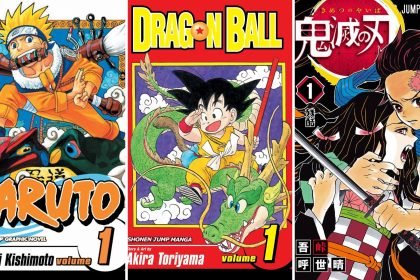Shonen anime, characterized by its action-packed storylines, intense battles, and compelling characters, has gained immense popularity among audiences worldwide. One of the key elements that contributes to the success of shonen anime is its use of humor and comedy. By infusing moments of levity and laughter into the narrative, shonen anime strikes a balance between intense action and dramatic moments, creating a unique viewing experience. In this article, we will explore the role of humor in shonen anime, examining how it enhances the storytelling, develops characters, and connects with the audience on an emotional level.
The Role of Humor in Shonen Anime
Humor plays a crucial role in shonen anime as it serves multiple purposes within the genre. Firstly, humor acts as a counterbalance to the intense action and high-stakes battles that are characteristic of shonen anime. It provides a reprieve from the tension and allows viewers to relax and enjoy lighter moments amidst the adrenaline-fueled sequences. Additionally, humor helps to create a more relatable and humanizing aspect to the characters. By showcasing their comedic quirks and flaws, it adds depth and complexity to their personalities, making them more endearing and engaging to the audience.
In shonen anime, humor takes on various forms, ranging from slapstick comedy to witty banter and clever wordplay. Slapstick comedy often involves exaggerated physical comedy and humorous mishaps, resulting in comedic relief and generating laughter. Witty banter and clever wordplay, on the other hand, rely on clever dialogue and puns to elicit humor. These types of humor not only provide entertainment but also showcase the creativity and skill of the writers in crafting comedic moments. By incorporating a diverse range of humor, shonen anime ensures that there is something for everyone, catering to different comedic preferences and appealing to a wide audience.
Comic Relief Characters
Another common use of humor in shonen anime is through the inclusion of comic relief characters. These characters are often designed to provide comedic relief and lighten the mood during intense or serious situations. They serve as a contrast to the main characters, who may be burdened with heavy responsibilities or engaged in life-or-death battles. Comic relief characters are typically characterized by their eccentric personalities, exaggerated reactions, or comedic antics. They inject humor into the story and offer a temporary respite from the tension, allowing viewers to relax and laugh along with their comedic escapades.
Comic relief characters not only provide entertainment value but also contribute to the overall narrative. They can offer insights into the main characters’ personalities or serve as catalysts for character development. Through their interactions and humorous exchanges with the main characters, they can foster deeper relationships and contribute to the growth and emotional journey of the protagonists. By balancing their comedic moments with moments of sincerity and vulnerability, comic relief characters become integral parts of the storytelling, enhancing the overall narrative of the shonen anime.
Situational Comedy and Gags
In addition to comic relief characters, shonen anime often utilizes situational comedy and gags to create comedic moments. Situational comedy involves placing characters in humorous or absurd situations that result in comedic outcomes. These situations may arise from misunderstandings, coincidences, or the characters’ own actions, leading to comedic misunderstandings, physical comedy, or comedic reversals. Such comedic moments provide a light-hearted and entertaining break from the main plot, allowing viewersto laugh along and enjoy the lighter side of the story.
Gags, on the other hand, are recurring comedic elements or running jokes that are incorporated throughout the series. These gags can take the form of catchphrases, visual gags, or comedic routines that are repeated in various contexts. The repetition of these gags creates a sense of familiarity and anticipation for the audience, resulting in comedic payoffs when the gags are executed. Gags not only provide consistent humor but also contribute to the overall identity of the series, becoming memorable aspects that fans associate with the show.
Through the use of situational comedy and gags, shonen anime creates a comedic rhythm that complements the action and drama. These comedic moments offer a break from the intense battles and plot developments, allowing viewers to engage with the series on a more light-hearted and enjoyable level. They add layers of entertainment and playfulness to the narrative, making the viewing experience dynamic and engaging.
Parody and Satire
Shonen anime often employs parody and satire as tools for humor. Parody involves mocking or imitating established tropes, conventions, or even other anime series in a humorous way. By exaggerating or subverting familiar elements, shonen anime creates comedic moments that both entertain and provide commentary on the genre itself. Parody allows viewers to recognize and appreciate the references and nods to other series, adding an extra layer of enjoyment for fans who are familiar with the source material being parodied.
Satire, on the other hand, uses humor to criticize or ridicule societal issues, cultural norms, or even specific aspects of the anime industry. Shonen anime may employ satire to shed light on social or cultural commentary, often in a lighthearted and exaggerated manner. Satirical elements can be found in the dialogue, character interactions, or even in the portrayal of certain situations. By infusing satire into the storytelling, shonen anime not only entertains but also encourages critical thinking and reflection among its viewers.
Parody and satire contribute to the self-awareness of shonen anime. They acknowledge and play with the established tropes and conventions of the genre while offering a fresh and humorous perspective. By incorporating these elements, shonen anime distinguishes itself from other genres and creates a unique identity that resonates with viewers who appreciate the blend of comedy and social commentary.
Humor as a Tool for Character Development in Shonen Anime
Humor is not only used for comedic relief or entertainment purposes in shonen anime but also serves as a tool for character development. Characters’ comedic quirks, reactions, and interactions provide insights into their personalities, motivations, and relationships. Humor can be used to showcase characters’ vulnerabilities, insecurities, or hidden depths, allowing viewers to connect with them on a deeper emotional level.
Through comedic moments, characters can reveal their true selves, breaking down emotional barriers and fostering genuine connections with other characters. Humor can also serve as a catalyst for character growth, as characters learn to overcome their flaws, embrace their quirks, and develop a sense of self-awareness. By utilizing humor as a tool for character development, shonen anime creates multidimensional and relatable characters that resonate with the audience.
Characters’ comedic traits and interactions can also contribute to the dynamics of their relationships. Humor can be used to build camaraderie, strengthen bonds, or create romantic tension between characters. The shared laughter and lighthearted moments can deepen the emotional connections and make the relationships more compelling and memorable.
The Cultural Context of Humor in Shonen Anime
It is important to acknowledge that humor in shonen anime is often influenced by the cultural context in which it is created. Japanese humor, known as “o-warai,” has its own set of comedic sensibilities and cultural references that may not always directly translate to international audiences. Certain jokes or comedic elements may rely on wordplay, cultural nuances, or specific references that are more familiar to Japanese viewers.
During the localization process, when shonen anime is adapted for international audiences, efforts are made to adapt the humor while preserving its essence. This involves finding equivalent jokes, puns, or comedic elements that can resonate with viewers from different cultural backgrounds. Localization teams work to strike a balance between staying true to the original intent of the humor and ensuring that it is accessible and relatable to the target audience.
The Impact of Humor on the Audience
Humor plays a significant role in engaging and connecting with the audience of shonen anime. It adds an extra layer of enjoyment to the viewing experience, making the series more memorable and entertaining. The comedic moments provide relief from the tension and create a sense of shared laughter and enjoyment among viewers.
Furthermore, humor enhances the overall emotional investment in the series. By eliciting laughter, shonen anime creates a positive and joyful experience for viewers, fostering a sense of attachment and affection towards the characters and the story. The comedic moments become cherished memories that fans associate with the series, leading to a lasting impact and a desire to revisit the show.
Humor also serves as a gateway for viewers to explore deeper themes and messages conveyed by the shonen anime. Through comedic moments, the series can tackle complex topics in a more digestible and relatable manner. Humor can be used as a vehicle to address serious issues, challenge societal norms, or provide social commentary. By using laughter as a medium, shonen anime invites viewers to reflect on deeper themes while maintaining an entertaining and engaging narrative.
Moreover, humor has the power to create a sense of community and camaraderie among fans of shonen anime. The shared laughter and enjoyment of comedic moments foster a sense of belonging and connection among viewers. Fans gather to discuss and celebrate the humorous aspects of their favorite series, creating a vibrant and supportive community that transcends geographical boundaries. This sense of community further enhances the overall viewing experience and contributes to the enduring popularity of shonen anime.
In conclusion, humor and comedy play a vital role in shonen anime, enriching the storytelling, developing characters, and forging a strong bond with the audience. Whether through situational comedy, comic relief characters, parody, or satire, humor brings levity and entertainment to the genre while offering insights, social commentary, and emotional depth. By incorporating humor in a skillful and balanced manner, shonen anime captures the hearts of viewers worldwide, creating an enduring impact that extends beyond the screen.













